Welcome
3000 B.C.
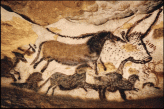
Hieroglyphics
Animation started with cavemen drawing pictures on walls. These drawings are known as "Hieroglyphics." These hieroglyphics were also used by the Egyptians and Native Americans to tell stories about how they hunted and so forth.
1872
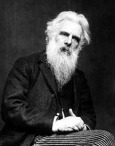
Eadweard Muybridge
Eadweard Muybridge started photographing animals in motion using multiple cameras.
http://www.digitaljournalist.org/issue0309/lm20.html
http://www.digitaljournalist.org/issue0309/lm20.html
1889
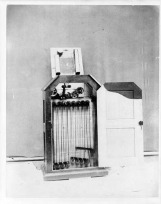
Thomas Edison's Kinetoscope
In 1889, Thomas Edison invented the "kinetoscope." The kinetoscope could process 50 feet of film in 13 seconds. George Eastman began the manufacture of photographic film strips.
1894
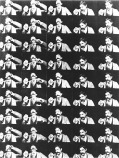
Sneeze film
In 1894, the recording of a sneeze became the first motion picture.
1896
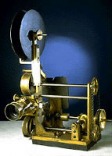
Vitascope
In 1896, the "vitascope" was invented by Thomas Armat. This machine projected the films of Thomas Edison. It had a major influence on all projectors.
1906
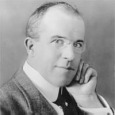
J Stuart Blackton
In 1906, J Stuart Blackton created the first animation film called, "Humorous phases of funny faces," with the use of "stop-motion." A year later, in 1907, J Stuart Blackton finished "The Haunted Hotel," which was a stop motion film with 3D animation. This film was a big success and introduced the concept of 3D animation to the world.
1914
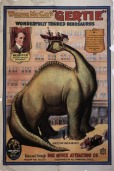
Gertie
In 1914, John R Bray applied for a patent on numerous techniques for animation. One of the most revolutionary being the process of printing the backgrounds of the animation.
Earl Hurd applied for a patent for the technique of drawing the animated portion of an animation on a clear celluloid sheet and later photographing it with its matching background. This is called "Cel animation."
Winsor McCay produced a cartoon called "Gertie, The Trained Dinosaur" (picture) which amazingly consisted of 10,000 drawings.
Earl Hurd applied for a patent for the technique of drawing the animated portion of an animation on a clear celluloid sheet and later photographing it with its matching background. This is called "Cel animation."
Winsor McCay produced a cartoon called "Gertie, The Trained Dinosaur" (picture) which amazingly consisted of 10,000 drawings.
1923
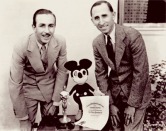
Walt on left and Roy on right
In 1923, Walt and Roy Disney found Disney Brothers Cartoon Studio.
1928
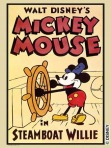
Steamboat Willy
In 1928, Walt Disney created the first cartoon with synchronized sound called "Steam Boat Willy". Later in 1932 it won an oscar for animation.
1934
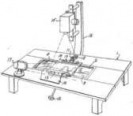
Multiplane camera
In 1934, Urb Irwek created a multi-plane camera. This camera is capable of filming several separate layers of cels giving the final frame a truly three dimensional look.
1937
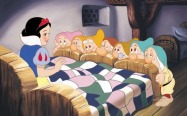
Snow White and th Seven Dwarfs
In 1937, Walt Disney released "Snow White and the Seven Dwarfs," which was his first animation feature film.
1940
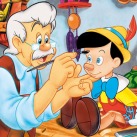
Pinocchio
In 1940, Disney creates "Pinnocchio and Fantasia."
1942

Paramount Logo
In 1942, Paramount/Famous studios opened with the old fleischer artists.
1945
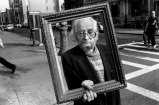
Harry Smith
In 1945, Harry Smith produced animation by drawing directly onto film.
1957

John Whitney
In 1957, John Whitney used 17 Bodine motors, 8 Selsyns, 9 different gear units and 5 ball integrators to create analog computer graphics. Then in 1961, John Whitney used different gears to create film and television title sequences.
1964
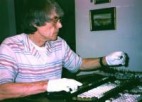
Ken Knowlton
In 1964, Ken Knowlton started developing computer techniques for producing animated movies.
1972
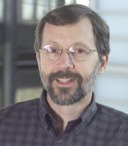
Ed Catmull
In 1972, Ed catmull developed scripting language and made a computer animation of a shaded hand.
Fred Parke created the first computer generated facial animation. "Computer Generated Animation of Faces."
Fred Parke created the first computer generated facial animation. "Computer Generated Animation of Faces."
1984-1993
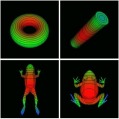
Computer Graphics
From 1984 to 1993, companies were expermenting and publishing different way to use computer graphics.
1993
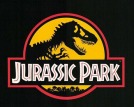
Jurassic Park Logo
In 1993, Jurassic Park used computer graphics for realistic living creatures.
1995
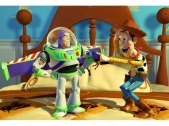
In 1995, Toy Story was the first full-length 3D computer graphic feature film.
